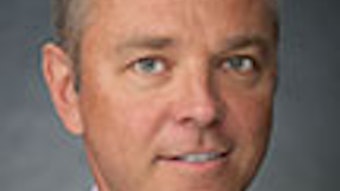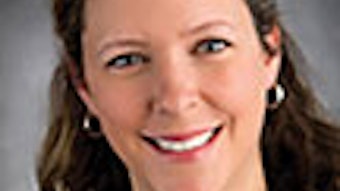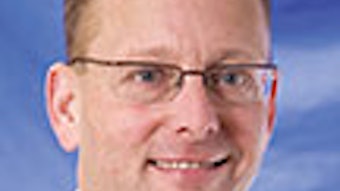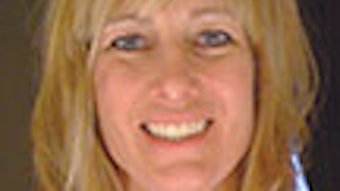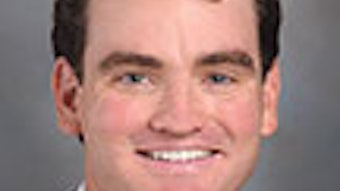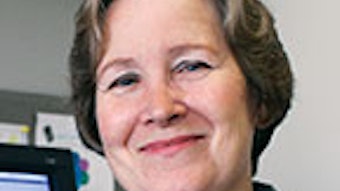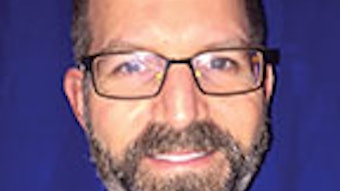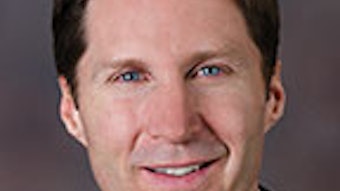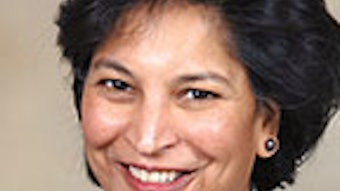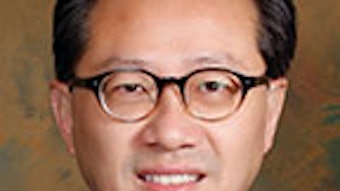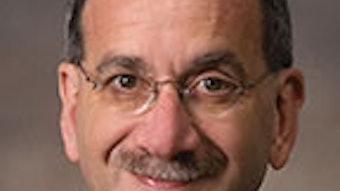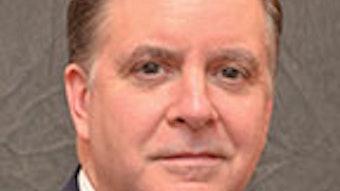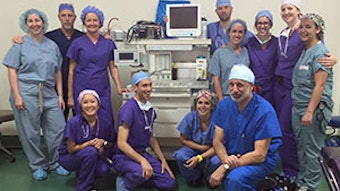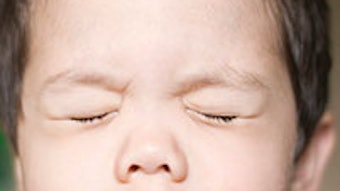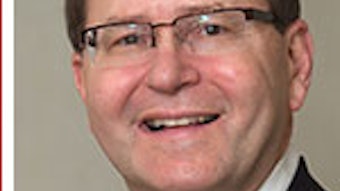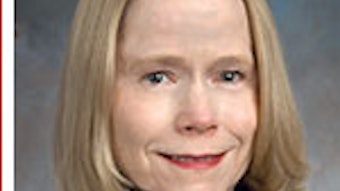UPDATED CLINICAL PRACTICE GUIDELINEAdult Sinusitis
Adapted from the April 2015 Supplement to Otolaryngology–Head and Neck Surgery. Read the guideline at otojournal.org.

When the AAO-HNSF first released “Clinical Practice Guideline: Adult Sinusitis” in 2007, it was “the first to outline a clear, evidence-based strategy for watchful waiting (without antibiotics) for acute bacterial rhinosinusitis,” said Richard M. Rosenfeld, MD, MPH, who chaired both the 2007 guideline and the 2015 update, released this month as a supplement to Otolaryngology–Head and Neck Surgery.
“In the previous guideline, watchful waiting was suggested as an ‘option.’ We now have substantial new evidence that allows us to ‘recommend’ watchful waiting or antibiotic therapy for mild, moderate, or even severe acute bacterial rhinosinusitis,” said Dr. Rosenfeld. “This empowers patients and clinicians to use antibiotics judiciously, reserving them for cases that don’t improve after waiting or that begin to worsen.”
Other differences between the 2007 guideline and the 2015 update include:
- more explicit details about the role of analgesics, topical intranasal steroids, and/or nasal saline irrigation for symptomatic relief of acute bacterial rhinosinusitis;
- a recommendation of amoxicillin with or without clavulanate when antibiotics are prescribed, whereas the prior guideline recommended amoxicillin alone;
- several statements about chronic rhinosinusitis, the management of which was not discussed at all in the 2007 guideline.
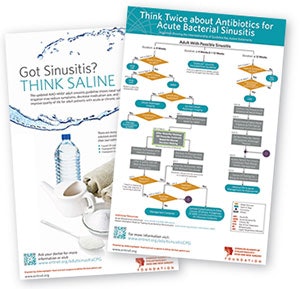 Two posters about adult sinusitis were included with the April print issue of the Bulletin. Patient information has also been updated.
Two posters about adult sinusitis were included with the April print issue of the Bulletin. Patient information has also been updated.“Overall, the updated guideline has a greater focus on patient education and shared decision-making among patients and physicians,” Dr. Rosenfeld said.
Sinusitis affects about one in eight adults in the United States, resulting in more than 30 million annual diagnoses. This updated multidisciplinary guideline identifies quality improvement opportunities in managing adult rhinosinusitis and includes explicit, actionable recommendations to implement in clinical practice. The full guideline and patient information, as well as other resources, are available at www.entnet.org/AdultSinusitisCPG.
Guideline recommendations
Differential diagnosis of acute rhinosinusitis
Clinicians should distinguish presumed acute bacterial rhinosinusitis (ABRS) from acute rhinosinusitis (ARS) caused by viral upper respiratory infections and noninfectious conditions. A clinician should diagnose ABRS when (a) symptoms or signs of ARS (purulent nasal drainage accompanied by nasal obstruction, facial pain-pressure-fullness, or both) persist without evidence of improvement for at least 10 days beyond the onset of upper respiratory symptoms, or (b) symptoms or signs of ARS worsen within 10 days after an initial improvement (double worsening).
Radiographic imaging and acute rhinosinusitis
Clinicians should not obtain radiographic imaging for patients who meet diagnostic criteria for ARS, unless a complication or alternative diagnosis is suspected.
Symptomatic relief of viral rhinosinusitis (VRS)
Clinicians may recommend analgesics, topical intranasal steroids, and/or nasal saline irrigation for symptomatic relief of VRS.
Symptomatic relief of acute bacterial rhinosinusitis
Clinicians may recommend analgesics, topical intranasal steroids, and/or nasal saline irrigation for symptomatic relief of ABRS.
Initial management of acute bacterial rhinosinusitis
Clinicians should either offer watchful waiting (without antibiotics) or prescribe initial antibiotic therapy for adults with uncomplicated ABRS. Watchful waiting should be offered only when there is assurance of follow-up, such that antibiotic therapy is started if the patient’s condition fails to improve by seven days after ABRS diagnosis or if it worsens at any time.
Choice of antibiotic for acute bacterial rhinosinusitis
If a decision is made to treat ABRS with an antibiotic agent, the clinician should prescribe amoxicillin with or without clavulanate as first-line therapy for five to 10 days for most adults.
Treatment failure for acute bacterial rhinosinusitis
If the patient fails to improve with the initial management option by seven days after diagnosis, or worsens during the initial management, the clinician should reassess the patient to confirm ABRS, exclude other causes of illness, and detect complications. If ABRS is confirmed in the patient initially managed with observation, the clinician should begin antibiotic therapy. If the patient was initially managed with an antibiotic, the clinician should change the antibiotic.
Diagnosis of chronic rhinosinusitis (CRS) or recurrent acute rhinosinusitis
Clinicians should distinguish chronic rhinosinusitis and recurrent acute rhinosinusitis from isolated episodes of acute bacterial rhinosinusitis and other causes of sinonasal symptoms.
Objective confirmation of a diagnosis of chronic rhinosinusitis
The clinician should confirm a clinical diagnosis of CRS with objective documentation of sinonasal inflammation, which may be accomplished using anterior rhinoscopy, nasal endoscopy, or computed tomography.
Modifying factors
Clinicians should assess the patient with CRS or recurrent acute rhinosinusitis for multiple chronic conditions that would modify management such as asthma, cystic fibrosis, immunocompromised state, and ciliary dyskinesia.
Testing for allergy and immune function
The clinician may obtain testing for allergy and immune function in evaluating a patient with chronic rhinosinusitis or recurrent acute rhinosinusitis.
Chronic rhinosinusitis with polyps
The clinician should confirm the presence or absence of nasal polyps in a patient with CRS.
Topical intranasal therapy for chronic rhinosinuisitis
Clinicians should recommend saline nasal irrigation, topical intranasal corticosteroids, or both, for symptom relief of CRS.
Antifungal therapy for chronic rhinosinuisitis
Clinicians should not prescribe topical or systemic antifungal therapy for patients with CRS.
Guideline authors
Richard M. Rosenfeld, MD, MPH; Jay F. Piccirillo, MD; Sujana S. Chandrasekhar, MD; Itzhak Brook, MD, MSc; Kaparaboyna Ashok Kumar, MD, FRCS; Maggie Kramper, RN, FNP; Richard R. Orlandi, MD; James N. Palmer, MD; Zara M. Patel, MD; Anju Peters, MD; Sandra A. Walsh, BS (MdT); and Maureen D. Corrigan, BA.
Disclaimer
The clinical practice guideline is provided for information and educational purposes only. It is not intended as a sole source of guidance in managing adults with rhinosinusitis. Rather, it is designed to assist clinicians by providing an evidence-based framework for decision-making strategies. The guideline is not intended to replace clinical judgment or establish a protocol for all individuals with this condition and may not provide the only appropriate approach to diagnosing and managing this program of care. As medical knowledge expands and technology advances, clinical indicators and guidelines are promoted as conditional and provisional proposals of what is recommended under specific conditions but are not absolute. Guidelines are not mandates; these do not and should not purport to be a legal standard of care. The responsible physician, in light of all circumstances presented by the individual patient, must determine the appropriate treatment.
Adherence to these guidelines will not ensure successful patient outcomes in every situation. The AAO-HNSF emphasizes that these clinical guidelines should not be deemed to include all proper treatment decisions or methods of care, or to exclude other treatment decisions or methods of care reasonably directed to obtaining the same results.

